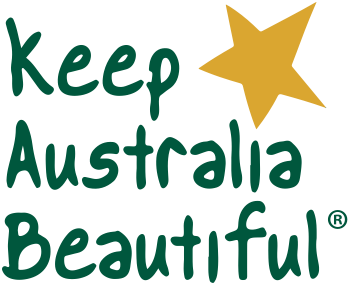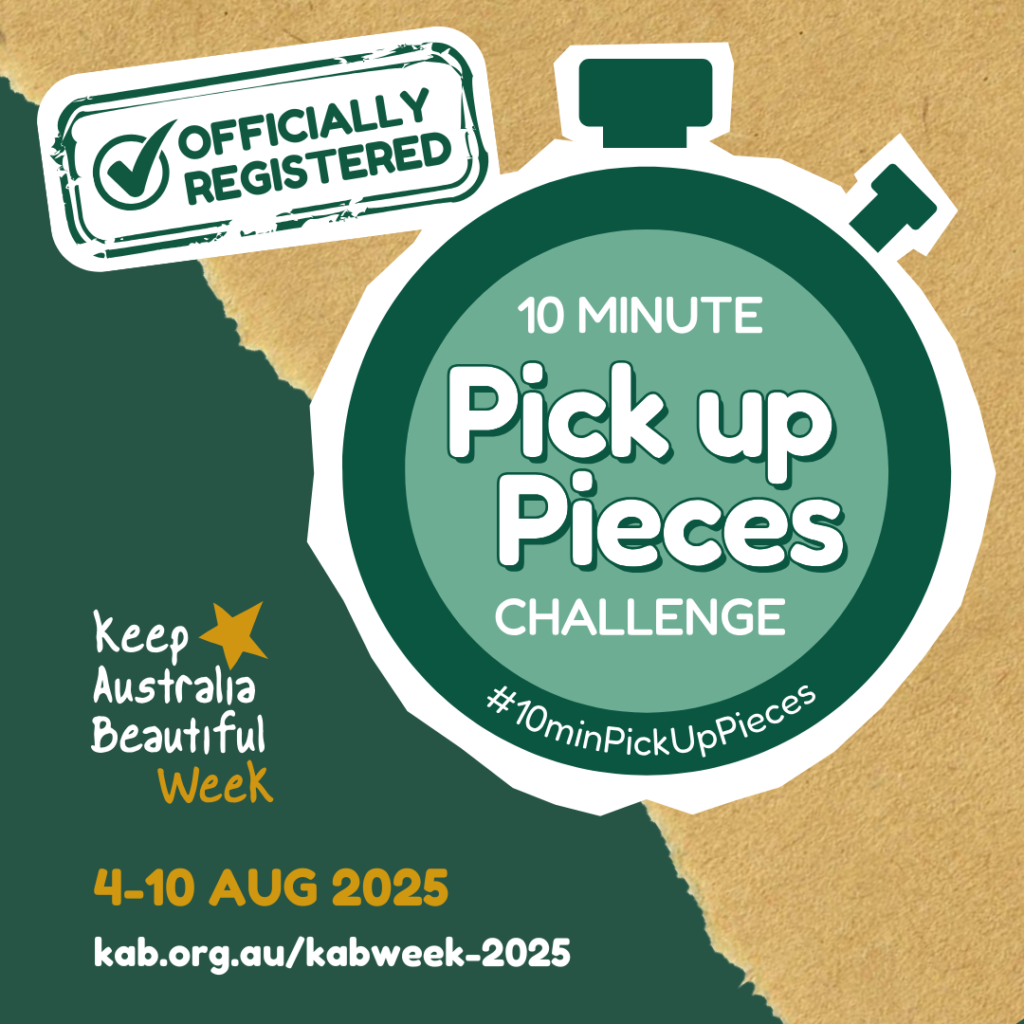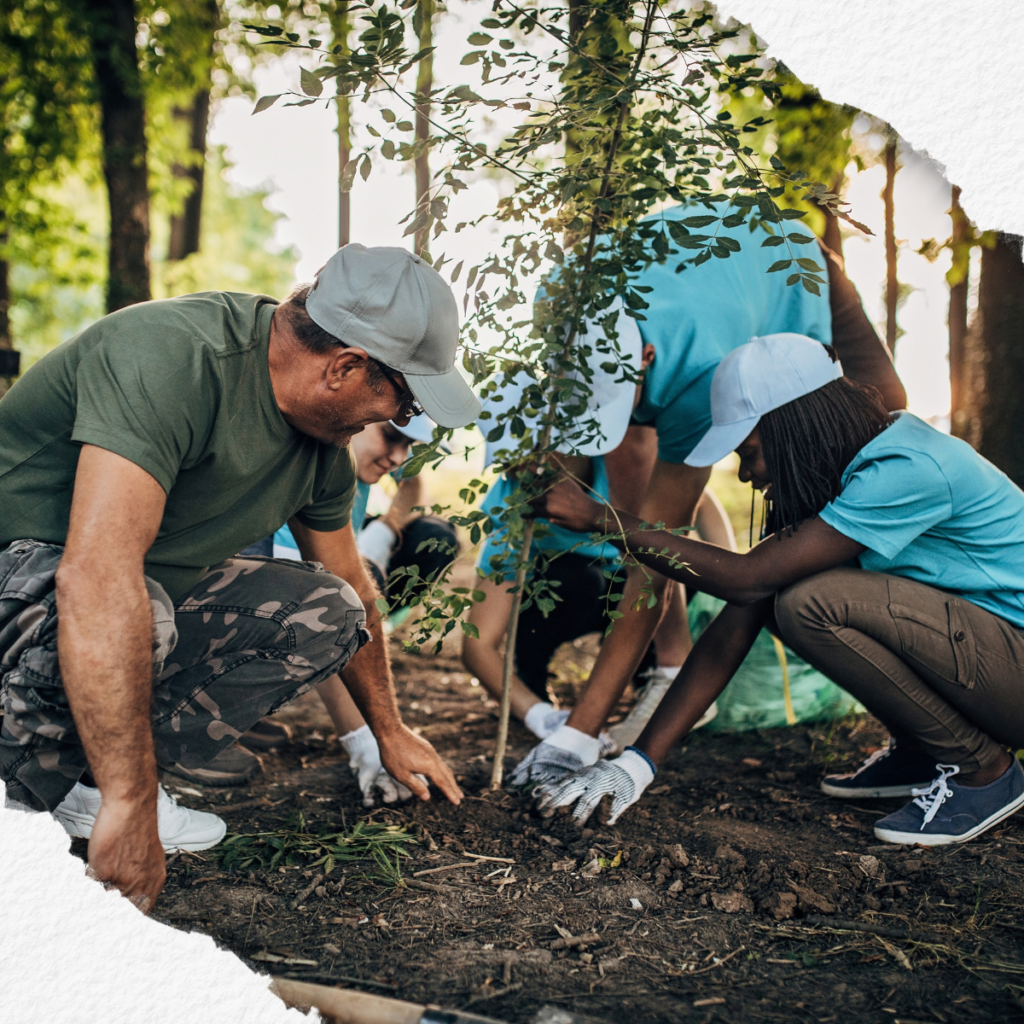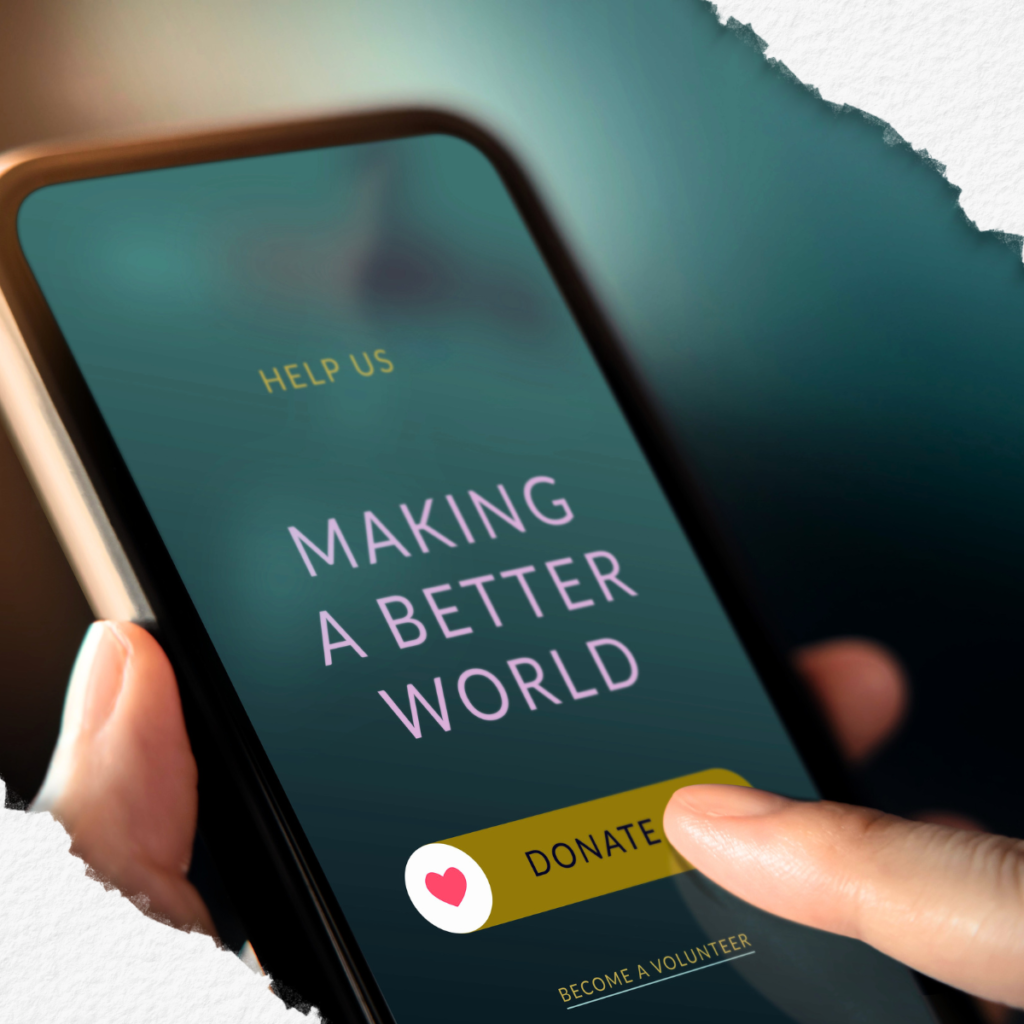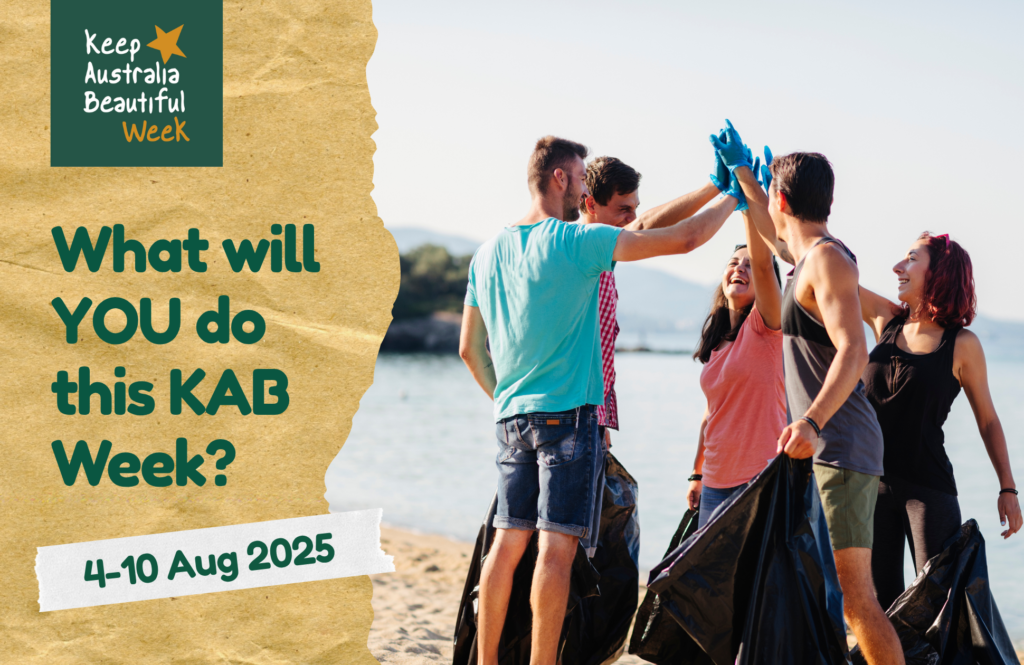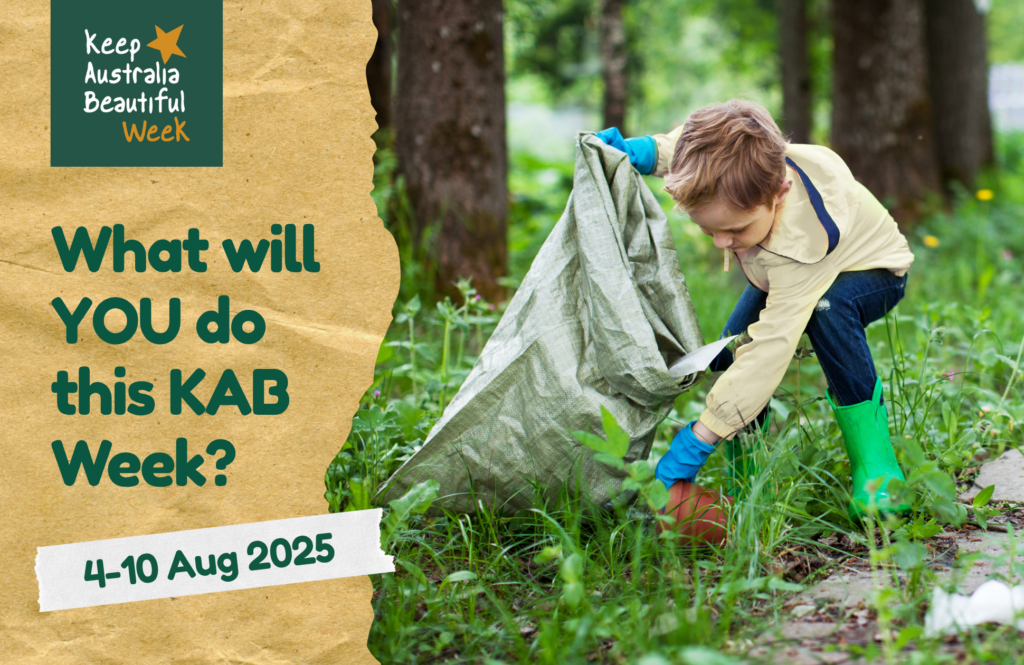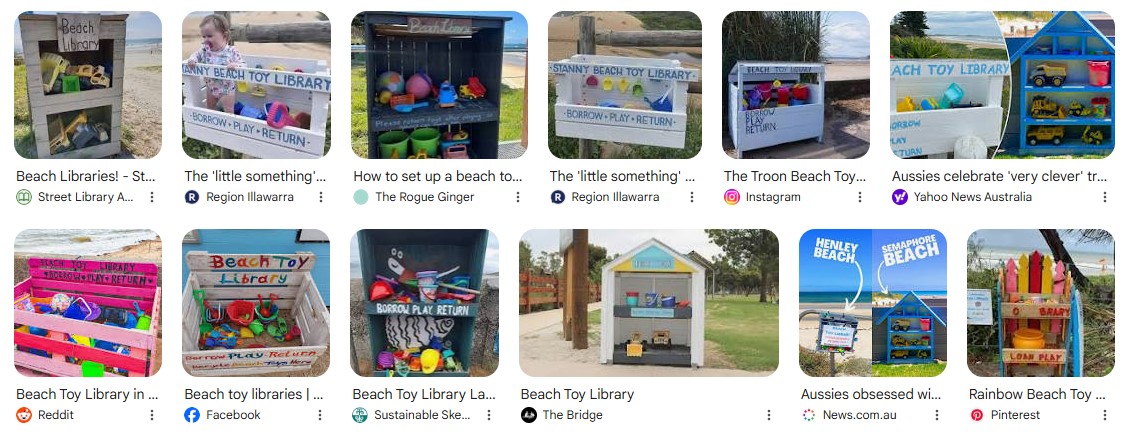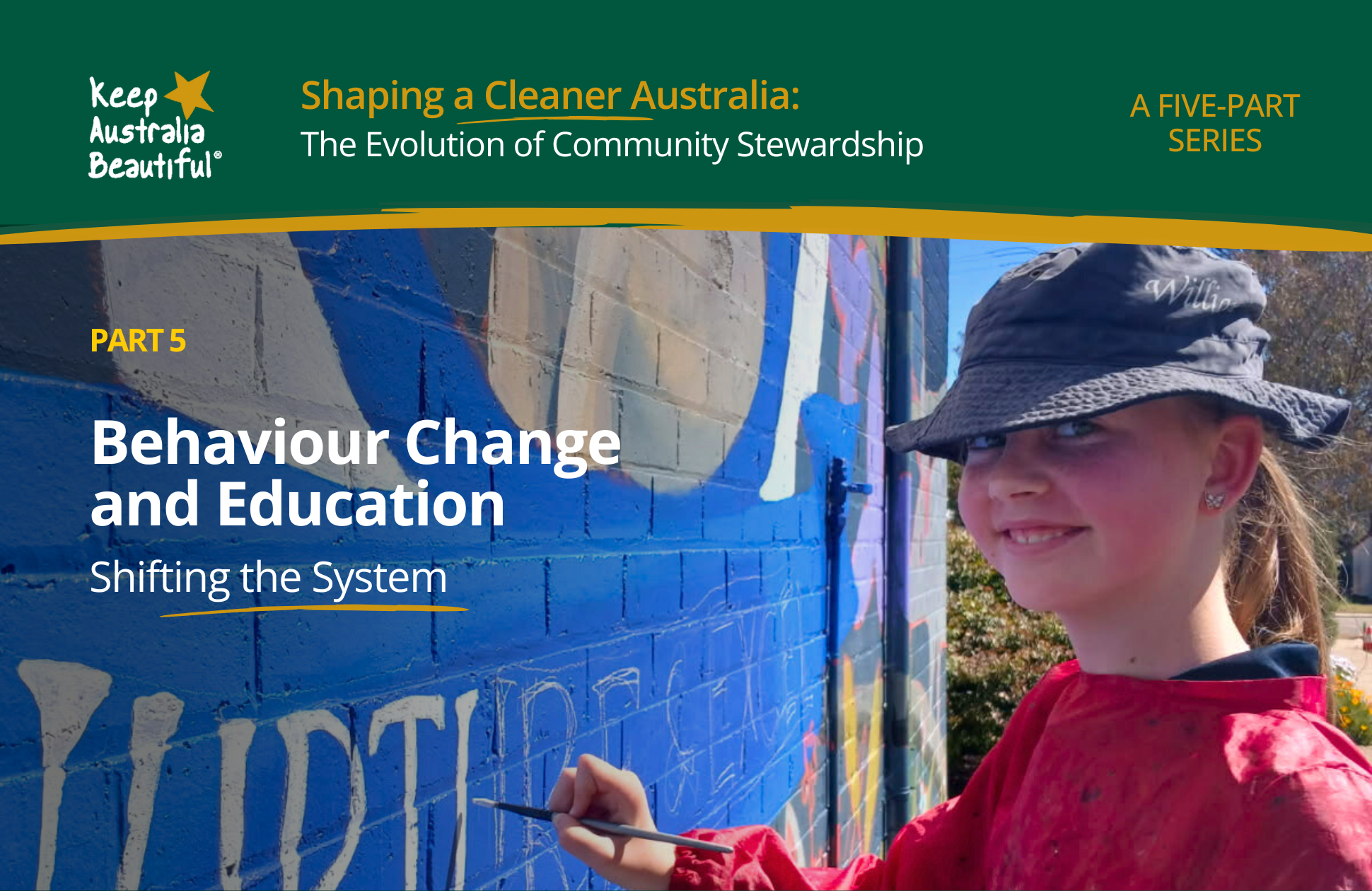by Madeleine Coyle, KAB Copywriter (Volunteer)
Every year, thousands of tonnes of litter pollute Australian streets, waterways, and natural areas, costing Councils millions in clean-up costs and harming wildlife and ecosystems. Local Councils are uniquely positioned to drive real change–not just by cleaning up, but by engaging and empowering their communities to prevent waste at the source.
Let’s find out a bit more about how Council-led sustainability initiatives can influence social change–and how Councils can organise their own KAB Week event.
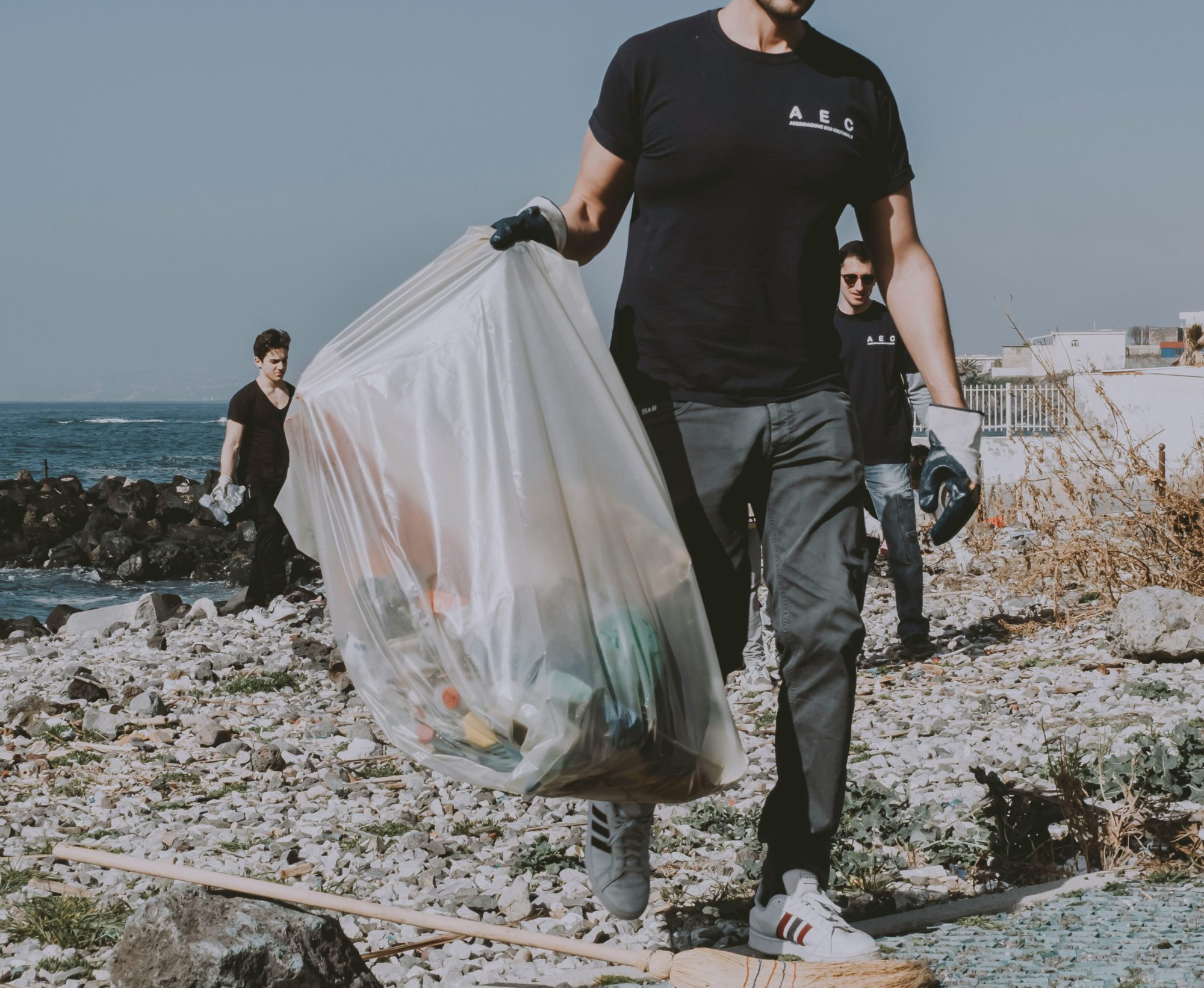
The Power of a Council-Led Initiative
Australia produces a staggering 75 million tonnes of waste per year. Though a global issue, local action is key to reducing this burden1. As the tier of government most connected to everyday Australians, councils have the ability–and responsibility–to lead by example, making sustainability accessible through local action like community clean-ups, waste education, and partnerships.
By their very nature, Councils serve as the vital link connecting communities to the broader efforts of government and industry on a national and global scale1. Councils are also in a unique position to communicate directly with people, engaging them in sustainability issues.1
Furthermore, Councils have the capacity to coordinate large-scale clean-up efforts, using their resources and networks to drive collective impact (aka strategic collaboration). The benefits of collective impact are vast (you can read more about them here). Essentially, it’s the ‘joining of forces’–and we encourage local Councils to take the lead, enhancing the credibility and impact of such initiatives.
“Every environmental issue is a local environmental issue. …The local governments in which they are located always have a profound and enduring interest that is worthy of attention by all spheres and stakeholders. Despite being the smallest (sphere of government)… local government environmental spending far outweighs that of the others…They also take small decisions and actions each day that cumulatively amount to shifts in regional environment and heritage values.” 2
Su Wild-River (2006:3)
Local Councils, this is your call to Action!
So, why not join in on a decades-long Australian tradition, and organise a Clean Up event this KAB Week?
Here is your guide to how you can get involved as a Council in KAB Week 2025 (and beyond!), with links to handy resources and how to get in touch with us.
How to Organise a Clean Up Event
Choose a Location and Day for your Event:
Start by identifying a public area that is in need of a tidy up–such as parks and playgrounds, reserves and waterways.
Visit the area to identify any potential hazards or safety issues.
Speaking to colleagues across different departments in your Council can be valuable for location consideration and support–find those with different areas of expertise!
TIP: When selecting your day, ensure there are no conflicting public events (e.g. a community festival in the park you intend to tidy).
Engage with other groups:
Reach out to local gyms, sporting clubs, schools, community groups, churches, township groups, industry and businesses to get their staff and members on board.
Engage with local environmental groups (eg. Landcare Australia groups, ‘Friends of’ groups, etc.) to collaborate. These are the people already taking hands-on action in your area to care for the environment, and will have reach to the like-minded.
There are immense benefits in collaborating with other community groups.
“The environment is where we all meet; where all have a mutual interest; it is the one thing all of us share.”
Lady Bird Johnson
Former US First Lady
Rachel Carson Award 2013 recipient
(posthumously awarded)
Register your KAB Week event:
Head to www.kab.org.au/kabweek-2025/ to share with us your plans!
Promote your KAB Week event:
The KAB Week Toolkit is designed to help you promote your event around the Council workplace and your wider community.
Please use these assets across any of your following communication channels, such as:
- Social Media
- Website
- EDMs
- Printed Newsletters
- Email Signatures
- Noticeboards
- … and more (get creative!)
TIP: Put up posters around bike tracks and walking paths near your Clean Up Event area weeks before the event.
Get fully equipped:
Ensure participants have high vis vests, gloves, and plenty of bags for rubbish and recycling. Leaders may like to have an identifiable vest or lanyard.
Encourage participants to bring a reusable drink bottle and wear closed toe shoes.
Organise general waste & recycling removal
Organise how the waste will be removed after the event with the relevant Council authority.
Organise unsafe items removal procedure
Organise a procedure for potential unsafe, bulky and hazardous items ahead of your event.
Consult with the relevant Council authorities prior to the event for safe disposal of items such as batteries, vapes, building materials and other unsafe items.
Consider health, safety and risks:
- Consider if your area may be potentially dangerous or have hazardous materials (a site visit prior to the event is a good idea).
- If you have a First Aid Officer ensure that they are visible and known to the participants. (perhaps add to the Company blog too?)
- You may like to have participants ‘sign in’ once they reach the site.
- Ensure participants wear enclosed footwear, hats, sunscreen, long sleeves and gloves, and bring reusable water bottles to stay hydrated.
Depending on the size of your site, you may choose to have an area set up for water bottles and refreshments.
- Certain clean-up locations may pose risks, such as roadsides, riverbanks, long grasses, steep areas or near cliffs. Always take appropriate safety measures to protect the group.
- Be mindful of hidden hazards in some areas, including the possible presence of venomous snakes or spiders. Stay alert and proceed with care.
- Depending on the size of the area–and to ensure everyone stays within this space–you may want to provide printed maps, and/or clear instructions.
- Review your public liability insurance.
- Review Council accident and injury procedures, and other public event protocols.
On the Day:
Have a safety briefing before commencing.
- Discuss road safety, working in pairs, staying within set boundaries, and the handling of sharp or dangerous items.
Direct the group to the area you will be cleaning.
After the event, you may like to celebrate with a BBQ or lunch (clean up events can really be enjoyable, community occasions!).
Share Your Event and Inspire Communities & Other Councils:
We love to see your hard work, so please share on socials and tag us.
#KABWeek2025 #10minPickUpPiecesChallenge #10minPickUpPieces #KeepAustraliaBeautiful #LitterFreeAustralia #WildlifeProtection #SustainableFuture #DoTheRightThing #EcoAction
FAQs
Why should local Councils participate in KAB Week?
Clean Up events don’t just leave towns tidier, they also foster community connection, enhance civic pride and can often get to the root cause of local litter issues.
Councils face significant costs in cleaning up public spaces. Proactive initiatives like KAB Week can help reduce these costs by involving residents directly in prevention and clean-up efforts.
How can I motivate my Council colleagues to participate in KAB Week?
Start by making it easy and inclusive, encourage involvement by highlighting how even small actions can have a big impact. Share the purpose behind KAB Week and how it’s been inspiring positive change since 1962.
Gather a team of like-minded colleagues across various departments. Many hands make light work!
What if it is raining? Should the event be cancelled?
Safety is priority, so if you do choose to cancel, please consider rescheduling (even if the new date falls beyond KAB Week).
How long should the event go for?
There is no set time requirement, but around 2 hours is a good length. But you may opt for a much longer event.
Can I use the Keep Australia Beautiful logo to promote our event?
Yes, please do! The KAB Week Toolkit has some ready-made posters, social media tiles, email banners and more to help you spread the word around the workplace.
Have a question that we haven’t covered? Please get in touch!
Further References
1 Thomas I and Millar S (2016) ‘Sustainability, education and local government: insights from the Australian state of Victoria’, Local Environment, 21(2), p1482-1499. doi:10.1080/13549839.2016.1140131
2 Wild-River SW (2006a) ‘The role of local government in environmental and heritage management’, article prepared for the 2006 Australia State of the Environment Committee, Department of Environment and Heritage, Canberra
